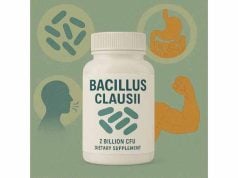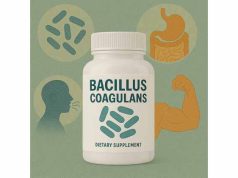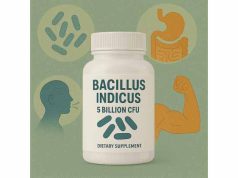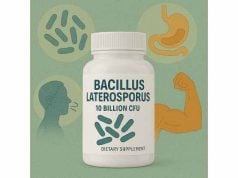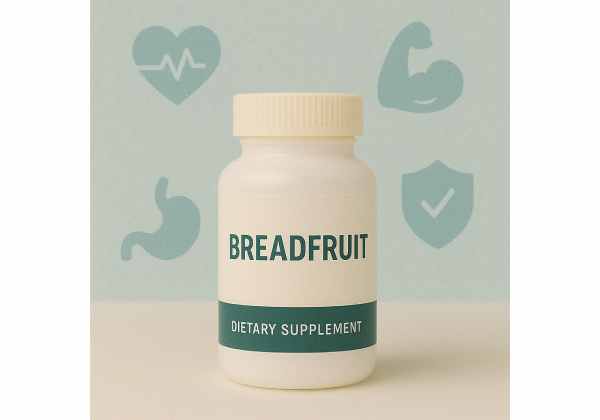
Breadfruit, an ancient superfood with roots in the tropical Pacific, is rapidly gaining recognition for its nutritional power and remarkable versatility. This large, starchy fruit isn’t just a staple in traditional diets—it’s now valued globally for supporting digestive health, providing sustained energy, and delivering a host of essential vitamins, minerals, and unique phytonutrients. Breadfruit is naturally gluten-free, rich in resistant starch and fiber, and may help balance blood sugar, improve gut health, and support heart wellness. Whether enjoyed roasted, baked, or as a supplement powder, breadfruit offers a nutrient-dense, sustainable food source with evidence-based wellness advantages that appeal to athletes, families, and anyone seeking clean, plant-based nutrition.
Key Takeaways
- Breadfruit is a nutrient-dense, gluten-free superfood packed with fiber, vitamins, minerals, and resistant starch.
- Its unique carbohydrate profile provides long-lasting energy and supports healthy blood sugar levels.
- Breadfruit’s phytonutrients and antioxidants may promote heart, gut, and immune health.
- Easily digested and allergen-friendly, it’s suitable for gluten-sensitive individuals and diverse diets.
- Safe and versatile, breadfruit can be consumed as food or a supplement—just follow best-practice storage and preparation guidelines.
Table of Contents
- Breadfruit Origins, Nutritional Profile, and Cultural Significance
- How Breadfruit Supports Health: Biological Actions and Scientific Insights
- Proven Benefits and Practical Uses of Breadfruit in Modern Nutrition
- Breadfruit Supplement Safety, Tolerability, and Potential Interactions
- Breadfruit Dosage, Recommended Intake, and Usage Guidelines
- Frequently Asked Questions About Breadfruit Benefits and Uses
Breadfruit Origins, Nutritional Profile, and Cultural Significance
Breadfruit (Artocarpus altilis) is a remarkable tree native to the tropical islands of the Pacific, including Polynesia, Melanesia, and Micronesia. For thousands of years, breadfruit has served as a dietary cornerstone in these regions, cherished for its ability to provide abundant, sustainable nutrition with minimal agricultural input. Its name comes from the bread-like texture and flavor of the cooked fruit, which can be roasted, baked, or boiled to yield a hearty, satisfying meal.
Historical and Cultural Legacy
Breadfruit’s journey is deeply entwined with the history and identity of Pacific Island cultures. Early voyagers carried breadfruit saplings on canoes across vast ocean distances, intentionally planting groves to secure food supplies for generations. Beyond its value as food, breadfruit trees were revered for providing wood, shade, and ecological stability—helping to anchor communities in sometimes harsh island environments.
The spread of breadfruit to the Caribbean, Central America, and parts of Africa during the colonial era further demonstrates its role as a food security crop. Today, breadfruit continues to be a symbol of resilience, abundance, and nourishment in tropical societies worldwide.
Nutritional Breakdown: Why Breadfruit Stands Out
Breadfruit is a true “whole food,” offering a unique combination of macronutrients, micronutrients, and phytonutrients:
- Complex Carbohydrates: Breadfruit’s primary energy source is its slow-digesting starch, including a high percentage of resistant starch—an indigestible carbohydrate that acts as dietary fiber, supporting gut health and stable blood sugar.
- Dietary Fiber: With about 4–5 grams per cup, breadfruit helps maintain digestive regularity and may reduce cholesterol absorption.
- Protein: Unusual among starchy fruits, breadfruit provides all essential amino acids, making it a complete, plant-based protein source.
- Vitamins: Rich in vitamin C (immune support and antioxidant protection), as well as B vitamins (especially niacin, thiamine, and folate), which are vital for metabolism and nervous system health.
- Minerals: Significant potassium (for blood pressure control), magnesium, iron, calcium, and copper.
- Phytonutrients: Contains flavonoids, carotenoids, and other plant antioxidants that fight oxidative stress.
Gluten-Free and Allergen-Friendly
One of breadfruit’s greatest assets is its natural absence of gluten and common allergens. For individuals with celiac disease, gluten intolerance, or food sensitivities, breadfruit offers a safe, nourishing alternative to wheat, barley, or rye-based foods. Its flour is increasingly popular in gluten-free baking, pancakes, and nutrition bars.
Culinary Versatility
Breadfruit’s texture and mild flavor make it one of the most adaptable staple foods. It can be:
- Roasted or baked as a savory side dish
- Mashed into a nutritious puree
- Dried and ground into flour for baking or supplement powders
- Sliced, fried, or stewed in soups and curries
As a supplement, breadfruit flour or powder delivers concentrated nutrition for smoothies, shakes, and energy-boosting recipes.
Sustainability and Food Security
Breadfruit trees are highly productive, low-maintenance, and drought-tolerant—making them a sustainable solution to global food insecurity. A single tree can yield up to 450 pounds of fruit annually. Growing breadfruit requires fewer resources and less land compared to many grains, enhancing environmental stewardship and community resilience.
At a Glance: Breadfruit’s Unique Value
- Ancient Pacific staple with worldwide appeal
- Complete, allergen-friendly protein and complex carbohydrates
- Loaded with micronutrients and antioxidants
- Sustainable, high-yield, and climate-resilient
- Adaptable as whole food or supplement powder
Breadfruit is more than just a staple—it’s a legacy of nourishment and a rising star in global nutrition.
How Breadfruit Supports Health: Biological Actions and Scientific Insights
Understanding why breadfruit delivers so many health benefits requires a closer look at its biological actions and the science behind its nutrition. Unlike many fruits that are mainly simple sugars, breadfruit’s composition—especially its resistant starch and unique protein matrix—yields metabolic effects that set it apart in the world of plant-based foods and supplements.
Resistant Starch: Fuel for a Healthy Gut and Stable Blood Sugar
A defining feature of breadfruit is its high resistant starch content. Resistant starch is a carbohydrate that resists digestion in the small intestine, instead reaching the colon where it’s fermented by beneficial gut bacteria.
Health effects of resistant starch in breadfruit:
- Gut Health: Acts as a prebiotic, feeding “good” bacteria and increasing short-chain fatty acids (like butyrate) that support colon health and may lower the risk of digestive diseases.
- Blood Sugar Control: Because resistant starch is digested slowly (or not at all), it leads to a lower glycemic response compared to refined grains, helping regulate post-meal blood sugar and insulin.
- Satiety and Weight Management: The slow digestion of breadfruit’s starch helps you feel fuller for longer, potentially supporting healthy weight goals.
Plant Protein: Complete Amino Acid Profile
Breadfruit is unique among staple crops for providing all nine essential amino acids—the building blocks of protein that the body cannot make on its own. While the overall protein content is moderate, the high-quality amino acid profile makes breadfruit especially valuable for plant-based, vegetarian, or vegan diets.
Benefits of breadfruit protein:
- Muscle Maintenance and Repair: Supports muscle health and recovery for athletes or active individuals.
- Metabolic Support: Protein helps stabilize energy, curb cravings, and maintain lean body mass.
Antioxidants and Phytonutrients: Cellular Defense
Breadfruit contains powerful antioxidants, including vitamin C, carotenoids (like beta-carotene), flavonoids, and phenolic acids.
- Oxidative Stress Reduction: These compounds help neutralize free radicals, molecules that can damage cells and accelerate aging or disease.
- Anti-Inflammatory Effects: Certain breadfruit phytochemicals may dampen inflammation and support immune resilience.
- Heart and Vascular Support: By reducing oxidative stress, breadfruit’s antioxidants may help protect blood vessels, reduce plaque buildup, and lower cardiovascular risk.
Mineral Powerhouse: Potassium, Magnesium, Iron
Breadfruit’s mineral content plays a vital role in overall health:
- Potassium: Maintains normal blood pressure, balances fluids, and supports nerve/muscle function.
- Magnesium: Regulates muscle/nerve function, blood sugar, and blood pressure.
- Iron and Copper: Essential for red blood cell production and oxygen delivery.
Gluten-Free Carbohydrate Source
For individuals avoiding gluten, breadfruit is a safe, whole-food carbohydrate that can replace wheat and other gluten grains. It’s also low in fat and naturally cholesterol-free.
Environmental and Metabolic Advantages
Because breadfruit is low in anti-nutrients (like phytates or lectins), it’s easy to digest and absorb. Its sustainable cultivation supports environmental health and community food security.
Summary of Breadfruit’s Mechanisms
- Supports gut microbiome and digestive health
- Stabilizes blood sugar and energy levels
- Provides essential amino acids for muscle and metabolism
- Delivers antioxidants for cell protection and immune function
- Offers key minerals for heart, nerve, and blood health
Breadfruit’s nutritional synergy makes it a standout in supporting holistic health, whether eaten fresh, cooked, or as a supplement.
Proven Benefits and Practical Uses of Breadfruit in Modern Nutrition
The resurgence of breadfruit isn’t just a nostalgic nod to its cultural roots—it’s backed by a growing body of scientific research and real-world evidence. Breadfruit’s nutrient density, digestibility, and versatility explain its rapid adoption in plant-based and functional nutrition circles. Let’s explore the key, evidence-based benefits and most effective ways to use breadfruit as a food or supplement.
1. Sustained Energy and Blood Sugar Balance
Breadfruit’s low glycemic index and slow-release carbohydrates provide a steady source of energy, making it ideal for athletes, busy professionals, and children alike. By avoiding the blood sugar spikes caused by refined grains and sugars, breadfruit helps maintain balanced energy and focus throughout the day.
- Athletic Fuel: Pre- or post-workout, breadfruit offers easily digestible starch and muscle-supporting protein.
- Family Nutrition: Breadfruit flour in pancakes, muffins, or porridge provides sustained energy for active kids and adults.
2. Gut Health and Digestive Comfort
With high levels of fiber and resistant starch, breadfruit acts as a natural prebiotic, feeding beneficial gut flora and supporting digestive health.
- Prebiotic Action: Promotes a balanced microbiome, which is linked to improved immunity, reduced inflammation, and better mood regulation.
- Gentle on the Gut: Naturally low in FODMAPs and anti-nutrients, breadfruit is less likely to cause bloating or irritation, even for those with sensitive digestion.
3. Cardiovascular and Metabolic Support
The potassium, fiber, and antioxidants in breadfruit work together to lower cholesterol absorption, support healthy blood pressure, and reduce oxidative stress—all important for heart health.
- Cholesterol Reduction: Soluble fiber in breadfruit can bind to cholesterol and help remove it from the body.
- Blood Pressure Management: High potassium intake helps relax blood vessels and control sodium balance.
4. Immune System and Anti-Inflammatory Benefits
Vitamin C, carotenoids, and flavonoids found in breadfruit boost immune defenses and help control inflammation.
- Enhanced Resilience: Regular consumption may reduce the risk of infections and help the body recover from illness.
- Inflammation Balance: Breadfruit’s anti-inflammatory compounds are especially valuable for those managing chronic inflammatory or autoimmune conditions.
5. Weight Management and Satiety
Breadfruit’s combination of slow-digesting starch, protein, and fiber increases satiety, reduces cravings, and supports healthy weight management.
- Meal Satisfaction: Eating breadfruit at breakfast or lunch can help curb afternoon snacking and maintain energy.
6. Allergen-Free, Gluten-Free, and Versatile for Special Diets
Breadfruit flour is a breakthrough for gluten-sensitive, celiac, or allergen-avoidant diets.
- Baking and Cooking: Easily replaces wheat flour in recipes for bread, muffins, tortillas, and more.
- Diverse Applications: Use as a base in smoothie bowls, thicken soups, or mix into protein shakes for extra nutrition.
7. Sustainable Nutrition for Planet and People
By choosing breadfruit, you support a food system that is environmentally sound and socially responsible.
- Eco-Friendly Crop: Breadfruit trees sequester carbon, restore degraded soils, and require less fertilizer and water.
- Food Security: High-yield and long-lasting storage potential make breadfruit ideal for addressing hunger and nutrition gaps in vulnerable regions.
Practical Tips for Using Breadfruit
- As a Whole Food: Roast, bake, boil, or fry breadfruit slices for a satisfying side or main dish.
- As a Flour or Powder: Substitute in recipes 1:1 for wheat flour (for most baked goods), or add to smoothies and shakes for a nutrient boost.
- Storage: Fresh breadfruit is best used within a few days, but flour or powder can be stored for months in a cool, dry place.
Breadfruit: Who Benefits Most?
- Individuals seeking gluten-free or allergen-free nutrition
- Athletes and active people needing sustained energy
- Families, children, and seniors for balanced meals
- Those interested in gut health, heart health, and sustainable eating
Breadfruit is more than a food—it’s a foundation for modern, functional nutrition that supports wellness at every stage of life.
Breadfruit Supplement Safety, Tolerability, and Potential Interactions
Breadfruit’s reputation as a wholesome, easily digested food is well deserved. As with any supplement or dietary staple, understanding its safety, tolerability, and possible interactions helps you make the most informed choices for your health. Fortunately, breadfruit is remarkably safe for most individuals when eaten as a food or in supplement form, but there are best practices and a few key precautions to keep in mind.
General Safety Profile
Breadfruit is recognized as safe (GRAS) by international food safety agencies and is widely consumed by millions around the world. Its history in traditional diets—often eaten daily—underscores its gentle impact on digestion and minimal risk for adverse effects.
Common Side Effects
For most healthy adults, breadfruit rarely causes side effects. However, some individuals may notice:
- Mild Digestive Upset: Occasionally, those unaccustomed to high-fiber foods may experience bloating, gas, or mild stomach discomfort when first increasing breadfruit intake. This is typical with any significant rise in dietary fiber or resistant starch and usually resolves as your gut adjusts.
- Loose Stool: Eating very large amounts of breadfruit, especially when undercooked, may have a mild laxative effect. Moderation and gradual introduction are key.
Allergic Reactions and Food Sensitivities
True allergies to breadfruit are extremely rare. Breadfruit is naturally free from gluten, dairy, soy, nuts, and most major allergens. This makes it suitable for individuals with celiac disease, gluten sensitivity, or common food allergies.
- Latex-Fruit Syndrome: A small subset of people allergic to latex may experience cross-reactivity with breadfruit (as with bananas or avocados). Symptoms can include oral itching or mild swelling. If you have a known latex allergy, consult your healthcare provider before consuming breadfruit.
Who Should Exercise Caution?
While breadfruit is safe for most, the following groups may wish to consult a medical professional before adding large amounts of breadfruit or concentrated supplements to their routine:
- Individuals with Chronic Kidney Disease: Breadfruit is high in potassium. Those on potassium-restricted diets should monitor intake, as excessive potassium can stress impaired kidneys.
- People on Blood Sugar Medications: Breadfruit is a complex carbohydrate, and while it supports stable blood sugar, it may still affect insulin and glucose levels. Diabetics should track their responses and consult with their healthcare team about breadfruit’s role in meal planning.
- Infants and Toddlers: Breadfruit is generally safe when cooked and served appropriately, but as with any new food, introduce it gradually and observe for rare sensitivities.
Drug and Supplement Interactions
Breadfruit has not been widely reported to cause significant drug interactions. However, theoretical interactions may exist:
- Potassium-Sparing Medications: Individuals taking potassium-sparing diuretics, ACE inhibitors, or angiotensin receptor blockers should be mindful of total potassium intake from all sources, including breadfruit.
- Fiber Supplements: Combining high-fiber breadfruit with additional fiber supplements may increase digestive side effects or reduce absorption of certain medications taken simultaneously.
Contamination and Quality Control
As with any supplement, the quality of breadfruit flour, powder, or capsules depends on sourcing, processing, and storage:
- Choose products from reputable manufacturers that test for contaminants, heavy metals, and pathogens.
- Store breadfruit flour and powder in a sealed, dry container away from heat and moisture to prevent spoilage and nutrient loss.
Breadfruit and Pregnancy
Cooked breadfruit is considered safe and nutritious during pregnancy, offering valuable fiber, protein, and micronutrients. For concentrated supplements, or if you are at risk for gestational diabetes or preeclampsia (where potassium or carbohydrate intake is a concern), consult your healthcare provider for personalized advice.
Breadfruit as a Functional Food Supplement
Breadfruit flour, powder, or supplement blends are increasingly available in health stores and online. These products offer:
- Convenient, portable nutrition for smoothies, shakes, or gluten-free baking
- Easy digestion and minimal allergy risk
- A practical option for travel, sports, or meal replacement
Safe Use Summary
- Start with small servings and gradually increase to avoid digestive upset.
- Monitor how your body responds, especially if you have kidney issues or are sensitive to fiber.
- Consult your healthcare provider if you are on medications for blood pressure, kidney, or blood sugar conditions.
- Use only well-sourced, tested breadfruit supplements for maximum safety.
Breadfruit’s safety and broad tolerability make it a top choice for those seeking plant-based nutrition that fits most dietary needs, but mindful integration ensures optimal results.
Breadfruit Dosage, Recommended Intake, and Usage Guidelines
While breadfruit is traditionally enjoyed as a whole food, its use in supplement form—particularly as flour or powder—has expanded its reach. Understanding how much breadfruit to eat, and how best to incorporate it into your diet, is vital to enjoying its benefits while maintaining a balanced, healthful approach.
Recommended Breadfruit Intake as Food
The ideal breadfruit serving depends on age, dietary needs, and activity level. As a staple food, a typical adult serving is:
- 1 cup (about 220g) of cooked breadfruit: This provides roughly 220 calories, 60g carbohydrates, 4g fiber, and 2–3g protein.
In Pacific Island cultures, adults often consume several cups per day as part of a balanced meal. For most, 1–2 cups daily is a practical guideline.
Breadfruit Supplement Dosage
For those using breadfruit as a supplement (flour, powder, or capsules):
- Breadfruit flour or powder:
Standard serving: 2–4 tablespoons (about 16–32g) per day, mixed into smoothies, porridge, baked goods, or shakes. - Capsules/Tablets:
Follow manufacturer’s directions, which commonly range from 500mg to 1g per dose, 1–2 times daily.
Always start with the lowest effective amount and gradually increase as your digestive system adjusts, especially if you’re not used to high-fiber foods.
Timing and Administration
- With Meals: Breadfruit is best consumed with meals to support digestion and sustained energy. For flour or powder, mix with liquids or use in baking to ensure proper hydration and nutrient absorption.
- Pre-Workout: Breadfruit’s slow-release carbs make it an excellent fuel for physical activity.
- In Baking/Cooking: Substitute breadfruit flour for wheat or other grains at a 1:1 ratio in most recipes for pancakes, muffins, or flatbreads.
Tips for Optimal Results
- Hydration: Breadfruit’s fiber content absorbs water; drink plenty of fluids to support gut health.
- Gradual Introduction: For sensitive stomachs, introduce breadfruit slowly and monitor for any digestive discomfort.
- Balanced Diet: Use breadfruit alongside a variety of fruits, vegetables, lean proteins, and healthy fats for complete nutrition.
Breadfruit for Special Diets
- Gluten-Free Diets: Breadfruit flour is naturally gluten-free and can replace wheat in recipes for those with celiac disease or gluten intolerance.
- Vegan/Vegetarian Diets: Breadfruit’s complete amino acid profile supports plant-based protein needs.
- Low-FODMAP Diets: Breadfruit is generally well tolerated and lower in FODMAPs than many legumes or grains.
Storage and Preparation
- Store breadfruit flour or powder in an airtight container in a cool, dry place for up to 6 months.
- Fresh breadfruit is best enjoyed within a few days of ripening; refrigerate or cook for longer storage.
When to Avoid or Adjust Breadfruit Intake
- Chronic Kidney Disease: Limit intake if you must restrict potassium.
- Medication Use: If on potassium-sparing or anti-diabetic drugs, consult your provider.
- Children/Infants: Introduce in small amounts, well-cooked, and observe for tolerance.
Practical Sample Day
- Breakfast: Breadfruit pancakes or porridge
- Lunch: Baked breadfruit with vegetables and protein
- Snack: Smoothie with breadfruit powder
- Dinner: Breadfruit stew or curry
Tailor serving sizes to your energy needs and enjoy the flexibility of this nutritious, global superfood.
Frequently Asked Questions About Breadfruit Benefits and Uses
What are the top health benefits of breadfruit?
Breadfruit supports digestive health, provides sustained energy, and is rich in vitamins, minerals, and antioxidants. It’s a complete plant-based protein, helps regulate blood sugar, and may promote heart, gut, and immune wellness.
Is breadfruit gluten-free and safe for celiac disease?
Yes, breadfruit is naturally gluten-free and safe for those with celiac disease or gluten intolerance. It’s an excellent substitute for wheat and other gluten-containing grains.
How do you use breadfruit flour or powder in recipes?
Breadfruit flour can be used 1:1 to replace wheat flour in baking or cooking. It’s great for pancakes, muffins, smoothies, porridge, and as a thickener in soups and stews.
Can breadfruit cause any side effects?
Breadfruit is very well tolerated but, when eaten in large amounts or suddenly increased in the diet, may cause mild digestive upset like bloating or loose stools. Rarely, people with latex allergies may react.
Is breadfruit suitable for people with diabetes?
Breadfruit’s resistant starch and fiber content support blood sugar control, but it is still a carbohydrate. People with diabetes should monitor portion size and blood sugar response and consult with a healthcare provider.
Who should avoid breadfruit or consult a doctor before using it?
Those with chronic kidney disease, on potassium-sparing drugs, or with latex allergies should talk to a healthcare provider before adding large amounts of breadfruit to their diet.
Is breadfruit a sustainable food?
Absolutely. Breadfruit trees are productive, low-maintenance, and help restore degraded land. They provide a sustainable, eco-friendly alternative to many grain crops.
Disclaimer:
The information provided in this article is for educational purposes only and is not intended as a substitute for professional medical advice, diagnosis, or treatment. Always consult with a qualified healthcare provider before making changes to your diet or supplement routine, especially if you have any medical conditions or are taking medication.
If you found this guide helpful, please consider sharing it on Facebook, X (formerly Twitter), or your preferred social platform. Follow us for more expert, evidence-based nutrition content. Your support helps us continue providing accessible wellness information to everyone—thank you!



